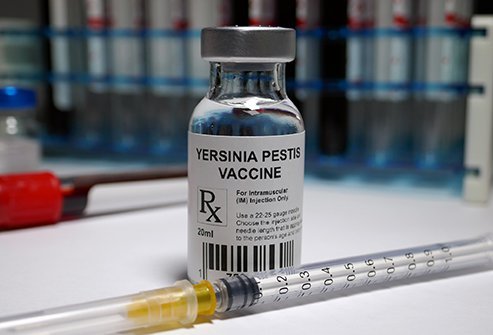
Yersinia pestis, also known as the "black bug", is a gram-negative, filamentous, rod-like, non-motility, anaerobic, spore-forming bacterium. It is an obligate anaerobic parasite that can infect humans through the common domestic animal host, the rat flea. It causes the human infection plague, that takes three major forms: septicemic, pneumonic and bubonic. The bacterium causes plague in humans and animals, though it may also cause the infection to animals, birds, and fish.
The first step in preventing or treating plague is recognizing and understanding the symptoms of the disease
Symptoms of plague in humans include fever, chills, exhaustion, sore throat, vomiting, abdominal pain and sometimes diarrhea. A few other symptoms are loss of appetite, weight loss, swollen lymph nodes and swelling of the abdomen or lower extremities. In most cases, plague in humans manifests as one of the following: inflammation of the skin, swollen glands in the neck, groin or armpit, fever, weakness, and fatigue. However, plague in animals, birds or fish is usually mild. Some dogs and cats can also be infected by plague in humans, but these animals are usually too young to be contagious.
Once plague is suspected, people are advised to see a doctor. The doctor may examine the physical health of the person and test for specific diseases. If there is positive diagnosis, antibiotics may be prescribed. Antibiotics will treat both the cause of plague and its symptoms. Antibiotics, however, are not meant to cure the plague. They simply kill the bacterium.
A prescription from a physician or pharmacist, called Yersinia suppressor drugs, are available to treat the symptoms of the plague. These drugs have no proven effectiveness against the Yersinia pestis bacterium and do not treat the source of the infection. If left untreated, the antibiotics can lead to severe infection. As with all medicines, it is important to seek medical advice from a doctor before taking any medications.
There are many home treatments that can be used to treat plague in humans. These treatments include the application of creams, ointments or powders on the skin, oral or injection therapy with antibiotics, or intravenous therapy. where the antibiotics are injected directly into the vein. Although these treatments work to treat the symptoms of the infection, they do not treat the cause of the infection, the bacteria.
Homeopathic remedies are commonly used to cure plague in humans
Some are based on herbs and others are based on different types of plants and animals. Herbal products can help to fight off the plague, though they have not been proven effective in clinical studies.
The effectiveness of homeopathic drugs is not completely known. But, they are believed to have some effect. In clinical studies, homeopathic products seem to help treat both the symptoms and the source of the infection. Studies have been conducted in India, where the use of homeopathy has been common in India for several years, and are now being tested in various places in Asia and Europe.
As with all natural cures, the effectiveness of homeopathic remedies is not guaranteed and it is important to discuss the possibility of using them with a doctor. before trying them out. If you or someone you know has the plague, the best way to get rid of it is to get medical treatment and not try to cure the plague with home remedies.
If you do have the plague, the best treatment for the plague is to find a way to kill the Yersinia pestis bacteria that caused the infection. If the bacterium can't be killed by natural means, then the best treatment is to take prescription medications from a doctor.
If you have the plague and no medical treatment is working, then you need to kill the black bug that carries the plague and stop the transmission of the disease to humans. This insect uses the human host's blood to produce a pheromone that attracts the other fleas in the area and allows it to lay its eggs on the human host's skin.
Home remedies that kill the pest include vinegar and baking soda. Other natural methods include washing the body with alcohol or rubbing it on the affected areas. If neither of these methods works, then you may have to seek medical treatment from a doctor.